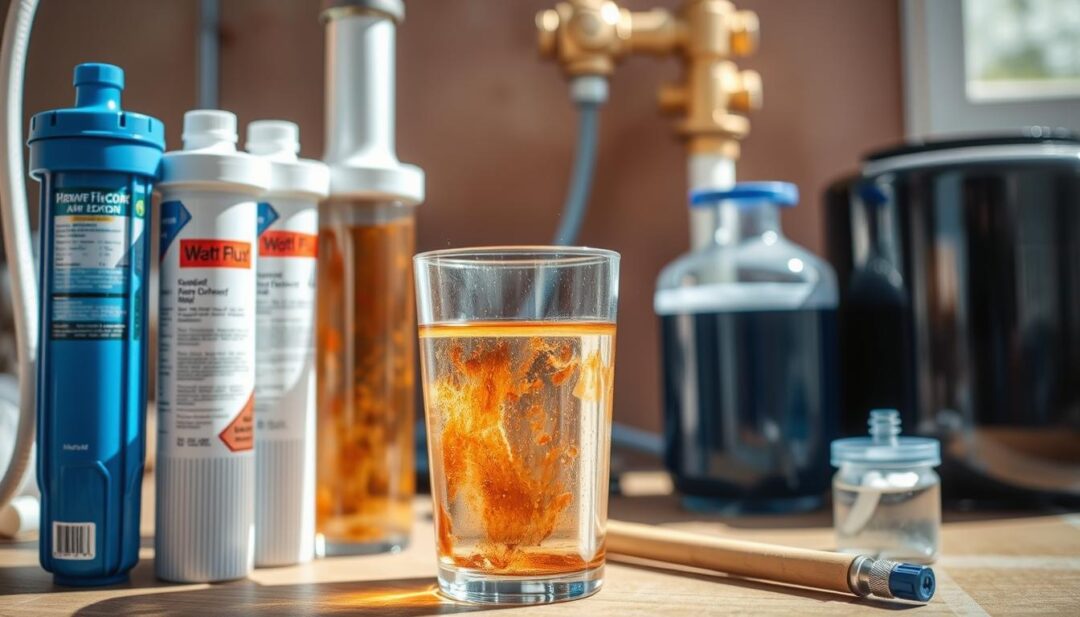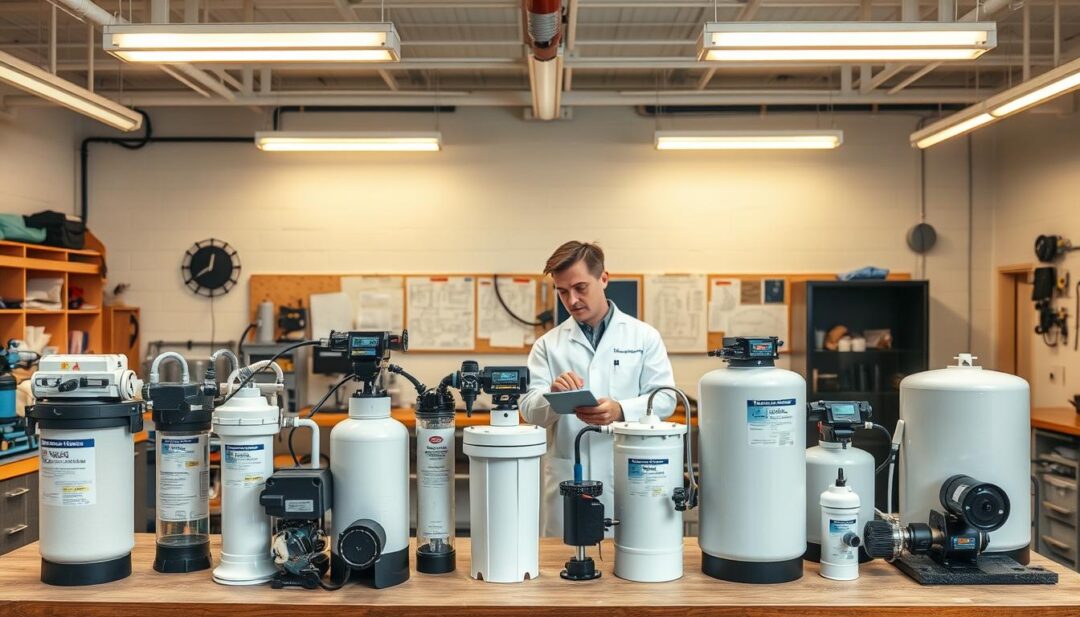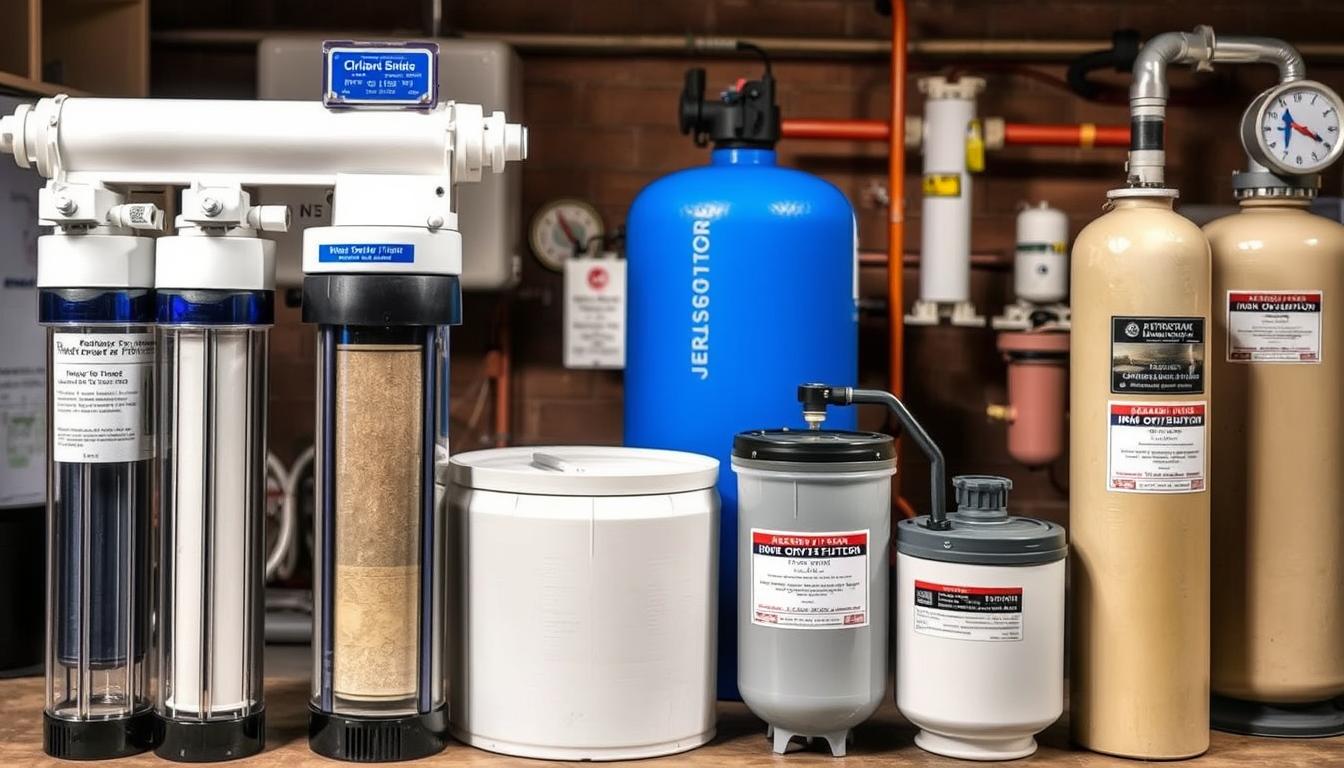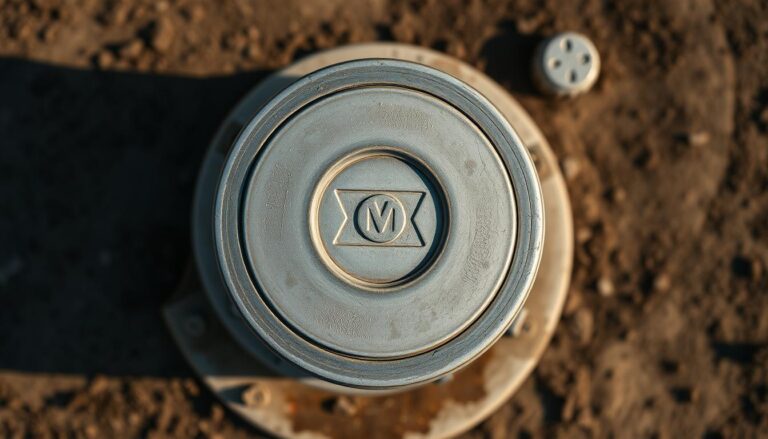Cheapest Way to Remove Iron from Well Water
Iron in well water is a common issue, especially in regions like East Tennessee. It can cause unsightly stains, damage plumbing, and affect the taste of your water. If you’re dealing with these problems, you’re not alone.
Finding an affordable iron filtration system is crucial to restoring your water’s quality. The good news is that there are effective iron removal methods available that won’t break the bank. Understanding your options is the first step towards clean and safe well water.
Key Takeaways
- Iron contamination can cause significant problems for well water users.
- Effective iron removal is crucial for maintaining water quality.
- Affordable iron filtration systems are available for households.
- Understanding different iron removal methods is key to making an informed decision.
- Investing in a reliable filtration system can save money in the long run.
Understanding Iron in Well Water
Iron in well water can be a significant issue for homeowners, causing a range of problems from aesthetic concerns to health risks. Understanding the nature of iron contamination is crucial for effective management and removal.
Common Signs of Iron Contamination
Iron contamination in well water often manifests through visible signs such as reddish-brown staining on fixtures and laundry. Additionally, water may have a metallic taste or odor, indicating the presence of iron.
Health and Household Effects of Iron
While iron is essential for health, excessive intake through water can lead to various health issues. Moreover, iron-rich water can damage household appliances and plumbing systems, leading to costly repairs.
Types of Iron in Well Water
There are three primary types of iron found in well water: ferrous, ferric, and bacterial iron. Each type has distinct characteristics and requires specific removal approaches.
Ferrous (Clear Water) Iron
Ferrous iron is dissolved in water and is not visible until it oxidizes. It’s the most common form of iron in well water.
Ferric (Red Water) Iron
Ferric iron is oxidized and appears as visible particles or reddish water. It’s easier to remove than ferrous iron.
Bacterial Iron
Bacterial iron is associated with the presence of iron bacteria, which can cause slimy buildup and unpleasant odors.
| Type of Iron | Characteristics | Removal Challenges |
|---|---|---|
| Ferrous Iron | Dissolved, invisible until oxidized | Requires oxidation for removal |
| Ferric Iron | Visible particles or reddish water | Easier to remove through filtration |
| Bacterial Iron | Slimy buildup, unpleasant odors | Requires treatment of bacteria |
Testing Your Well Water for Iron
Testing your well water for iron is a vital step in ensuring your water is safe and clean. Iron contamination can lead to unpleasant tastes, odors, and even health issues. Therefore, understanding the level of iron in your well water is crucial.
DIY Testing Methods
You can test your well water for iron using DIY kits available at hardware stores or online. These kits usually involve taking a water sample and using test strips or a colorimetric test to estimate iron levels.
- Easy to use
- Quick results
- Cost-effective
Professional Testing Options
For more accurate results, consider hiring a professional to test your well water. Laboratories can provide detailed analyses of your water’s iron content and other contaminants.
Benefits of professional testing:
- High accuracy
- Comprehensive analysis
- Expert advice
Interpreting Test Results
Once you have your test results, understanding what they mean is key. Iron levels are typically measured in milligrams per liter (mg/L).
Safe Iron Levels
While there’s no strict health-based standard for iron in drinking water, levels above 0.3 mg/L can cause noticeable staining and taste issues.
When to Take Action
If your test results show iron levels above 0.3 mg/L, it’s time to consider iron removal solutions. The higher the level, the more robust the solution needed.
The Cheapest Way to Remove Iron from Well Water
The quest for clean drinking water leads many to seek the most cost-effective methods for iron removal from well water. Iron contamination can cause unpleasant taste, staining, and potential health issues, making its removal crucial. Several methods are available, each with its own cost implications.
Water Softeners as Budget Solutions
Water softeners are often considered for iron removal because they can also reduce water hardness. While primarily designed to remove calcium and magnesium, some water softeners can handle small amounts of iron. However, their effectiveness depends on the type and amount of iron present. For households with relatively low iron levels, a water softener might be a cost-effective solution.
It’s essential to choose a water softener that is designed to handle iron removal. Some models come with features specifically for this purpose. The initial cost of a water softener can range from $300 to $1,500, and ongoing costs include salt replacement and maintenance.
Oxidation Methods on a Budget
Oxidation is a common method for removing iron from well water. It involves converting dissolved iron into a solid form that can be filtered out. This process can be achieved through aeration or chemical oxidation. Aeration systems, which introduce air into the water, are generally more cost-effective and environmentally friendly.
- Cost-effective for households with significant iron contamination.
- Environmentally friendly as they don’t require chemicals.
- Require regular maintenance to ensure effectiveness.
Sediment Filtration Approaches
Sediment filtration is another effective method for removing iron from well water, especially when the iron is in a particulate form. Filters with pore sizes small enough to capture iron particles can be used. Some households opt for cartridge filters or multimedia filters, which can be more affordable upfront.
The key to an effective sediment filtration system is regular maintenance, including replacing filters as needed. The cost of replacement filters varies, but it’s generally affordable, ranging from $50 to $200 per year, depending on the system and usage.
DIY Iron Removal Solutions
DIY iron removal solutions provide a practical and affordable way to tackle iron contamination in well water. Homeowners can implement these methods to reduce iron levels without incurring significant costs.
Homemade Aeration Systems
Homemade aeration systems are a simple and effective way to remove iron from well water. By introducing oxygen into the water, these systems help to oxidize the iron, making it easier to remove.
Shower Head Aerators
Shower head aerators are a straightforward DIY project that can help reduce iron levels. By attaching an aerator to your shower head, you can increase oxygen flow, helping to oxidize iron.
Cascading Water Systems
Cascading water systems involve creating a DIY setup that allows water to flow over a series of steps or surfaces, increasing oxygen exposure. This method can be an effective way to aerate well water and reduce iron content.
DIY Filtration Methods
In addition to aeration, DIY filtration methods can also be effective in removing iron from well water. Homeowners can create their own filtration systems using readily available materials.
Some common DIY filtration methods include using activated carbon, sand, and gravel. These materials can be used to create a simple filtration system that removes iron and other contaminants.
Household Remedies for Minor Iron Issues
For minor iron contamination, household remedies can provide a quick fix. Boiling water, for example, can help oxidize iron, making it easier to remove. Other remedies include using lemon juice or vinegar to help reduce iron levels.
| Method | Effectiveness | Cost |
|---|---|---|
| Homemade Aeration Systems | High | Low |
| DIY Filtration Methods | Medium | Moderate |
| Household Remedies | Low | Low |

Budget-Friendly Commercial Iron Removal Systems
Budget-friendly commercial iron removal systems are designed to tackle iron contamination in well water, offering peace of mind for homeowners. These systems come in various forms, catering to different needs and budgets.
Affordable Iron Filters
Iron filters are a crucial component of many iron removal systems. Two notable options are Birm Filters and Manganese Greensand Filters.
Birm Filters
Birm filters are known for their efficiency in removing iron and manganese from water. They work through a process of oxidation and filtration, making them a popular choice for many homeowners.
Manganese Greensand Filters
Manganese greensand filters utilize a special media that is coated with manganese dioxide, which oxidizes and removes iron and other contaminants. They are particularly effective for high iron concentrations.
Cost-Effective Whole House Systems
Whole house systems are designed to treat all the water in a household, providing comprehensive protection against iron contamination. These systems are often more cost-effective in the long run, as they reduce the need for multiple point-of-use filters.
Point-of-Use Solutions
For situations where a whole house system might not be feasible, point-of-use solutions offer a targeted approach. These systems are installed at specific faucets or appliances, providing localized iron removal.
When selecting a commercial iron removal system, it’s essential to consider factors like the level of iron contamination, household size, and budget. By choosing the right system, homeowners can enjoy clean, iron-free water without straining their finances.
Comparing Cost vs. Effectiveness
The key to choosing an effective iron removal system lies in understanding the initial investment, ongoing operating costs, and how well it performs with different iron concentrations.
Initial Investment Considerations
When evaluating iron removal systems, the initial purchase price is a significant factor. However, it’s not the only cost to consider. Installation costs, any necessary modifications to your plumbing, and the cost of additional components can add to the upfront expense. For instance, whole-house systems typically require more extensive installation than point-of-use systems, affecting the initial investment.
Long-term Operating Costs
Beyond the initial cost, the long-term operating expenses of an iron removal system can significantly impact its overall cost-effectiveness.
Electricity Usage
Many iron removal systems, especially those that use oxidation or filtration, consume electricity. The cost of this electricity can vary depending on the system’s efficiency and the amount of water being treated.
Replacement Parts
Filters, electrodes, and other components may need periodic replacement, adding to the system’s ongoing cost. The frequency and cost of these replacements can vary widely between different systems.
Chemical Additives
Some iron removal systems require chemical additives to function effectively. The cost of these chemicals, and the frequency with which they need to be replenished, should be factored into your overall cost calculation.
| System Type | Initial Cost | Annual Operating Cost | Effectiveness |
|---|---|---|---|
| Oxidation System | $500-$1000 | $100-$300 | High |
| Filtration System | $300-$800 | $50-$200 | Medium-High |
| Water Softener | $400-$1200 | $100-$400 | Medium |
Effectiveness Based on Iron Levels
The effectiveness of an iron removal system is closely tied to the concentration of iron in your water. Systems that are highly effective for low iron levels may struggle or become uneconomical at higher concentrations. Understanding the iron levels in your water is crucial to selecting a system that is both effective and cost-efficient.
Maintenance Tips to Maximize System Lifespan
Maintaining your iron removal system is crucial for its longevity and effectiveness. A well-maintained system not only ensures clean water but also saves you money in the long run by reducing the need for frequent replacements or repairs.
Regular Maintenance Schedule
Establishing a regular maintenance schedule is vital. This includes checking the system’s performance regularly, inspecting for any signs of wear or damage, and performing routine cleaning. A consistent schedule helps in identifying potential issues before they become major problems.
Key maintenance tasks include:
- Inspecting filters and replacing them as needed
- Checking for any blockages or sediment buildup
- Ensuring all connections are secure and not leaking
DIY Maintenance vs. Professional Service
When it comes to maintenance, homeowners have the option to either perform DIY tasks or hire a professional. While DIY maintenance can be cost-effective, certain tasks may require professional expertise, especially if the system is complex.
“Regular maintenance by a professional can significantly extend the life of your iron removal system,” says a water treatment expert. “It’s a worthwhile investment to ensure your system operates at peak performance.”
Extending Filter Life on a Budget
Filters are a crucial component of iron removal systems, and extending their life can save money. One effective way is through backwashing, a process that removes accumulated sediment and debris.
Backwashing Techniques
Backwashing involves reversing the flow of water through the filter to clean it. This should be done regularly, depending on the system’s usage and the manufacturer’s recommendations.
Cleaning Solutions
Using the right cleaning solutions can also help maintain the system’s efficiency. It’s essential to use solutions that are compatible with the system’s materials to avoid damage.
By following these maintenance tips, you can maximize the lifespan of your iron removal system, ensuring it continues to provide clean, iron-free water for years to come.
Choosing the Right Solution for Your Situation
When it comes to removing iron from well water, the right solution depends on multiple factors unique to your situation. Choosing an iron removal system that fits your needs involves more than just picking a product; it’s about understanding your water’s characteristics and your household’s requirements.
Factors to Consider
Several key factors play a crucial role in determining the most suitable iron removal system for your well water. These include:
Water Usage Volume
The amount of water your household consumes daily affects the capacity of the iron removal system you need. Larger households require systems with higher treatment capacities.
Iron Concentration
The level of iron in your well water is a critical factor. Higher iron concentrations may require more advanced or robust treatment solutions.
Available Space
The physical space available for installing the iron removal system is another important consideration. Some systems are more compact than others.
Solutions Based on Iron Concentration
The concentration of iron in your well water significantly influences the type of removal system you should choose. For low iron levels, simple filtration systems may suffice, while higher concentrations may require more complex systems involving oxidation or chemical treatment.
| Iron Concentration (mg/L) | Recommended Solution |
|---|---|
| 0-1 | Simple Filtration |
| 1-5 | Oxidation Filtration |
| 5+ | Advanced Oxidation or Chemical Treatment |
Recommendations for Different Budgets
Budget is a significant factor in choosing an iron removal system. For those on a tighter budget, DIY solutions or more affordable filtration systems can be effective. For those with more budget flexibility, whole-house systems or advanced technologies may offer better long-term value.

Conclusion
Removing iron from well water can be achieved through various methods, ranging from DIY solutions to commercial systems. The key is finding a cost-effective solution that meets specific needs.
Throughout this article, we’ve explored the cheapest ways to remove iron from well water, including water softeners, oxidation methods, and sediment filtration approaches. We’ve also discussed DIY iron removal solutions, budget-friendly commercial systems, and maintenance tips to maximize system lifespan.
When selecting an iron removal method, it’s crucial to consider both the initial investment and long-term operating costs. By choosing an affordable solution that effectively addresses iron contamination, homeowners can enjoy cleaner, safer water without breaking the bank.
By implementing the right iron removal method, individuals can protect their health, household appliances, and plumbing systems from the negative effects of iron contamination. Whether you’re dealing with minor iron issues or more severe contamination, there’s an affordable solution available to meet your needs.







